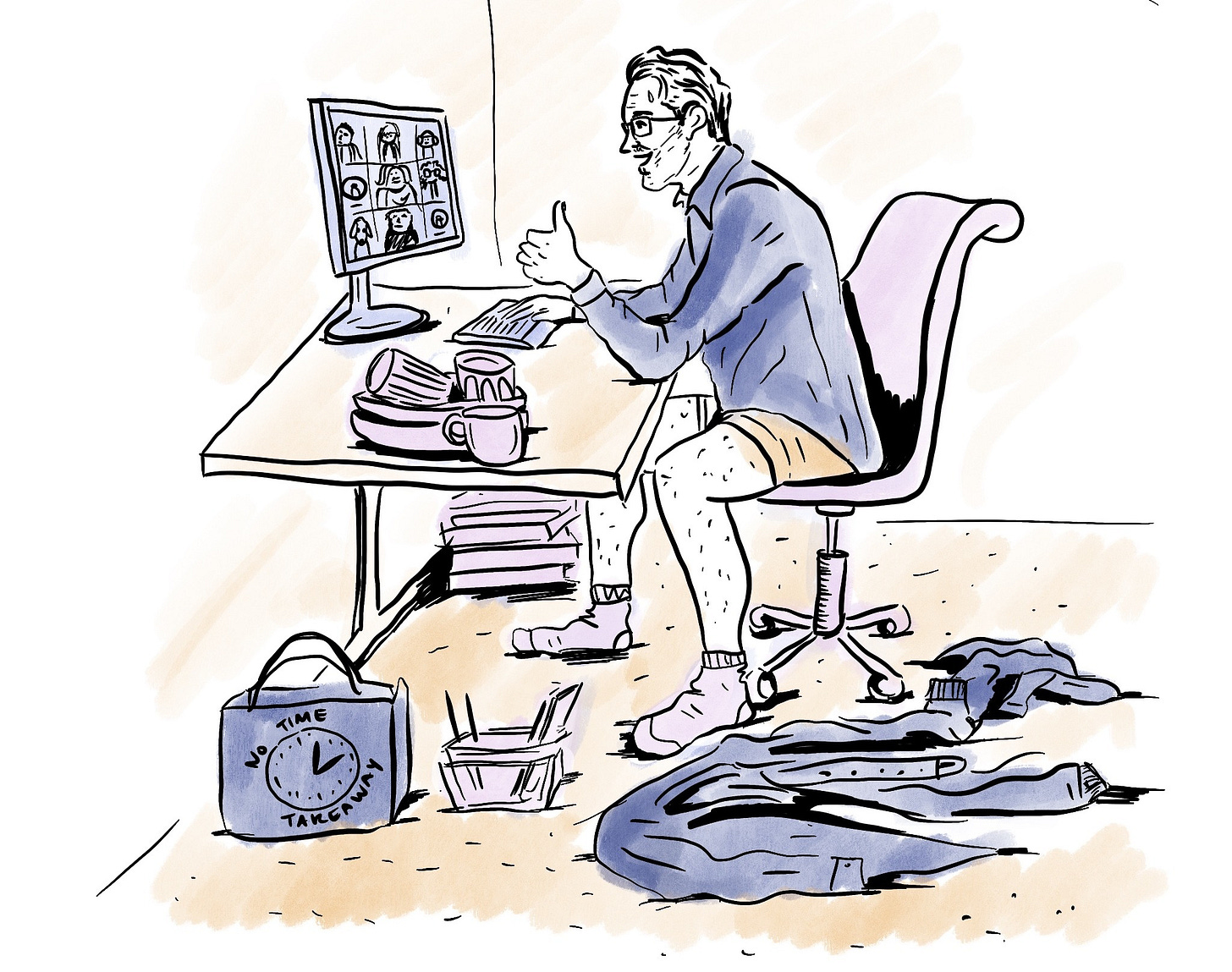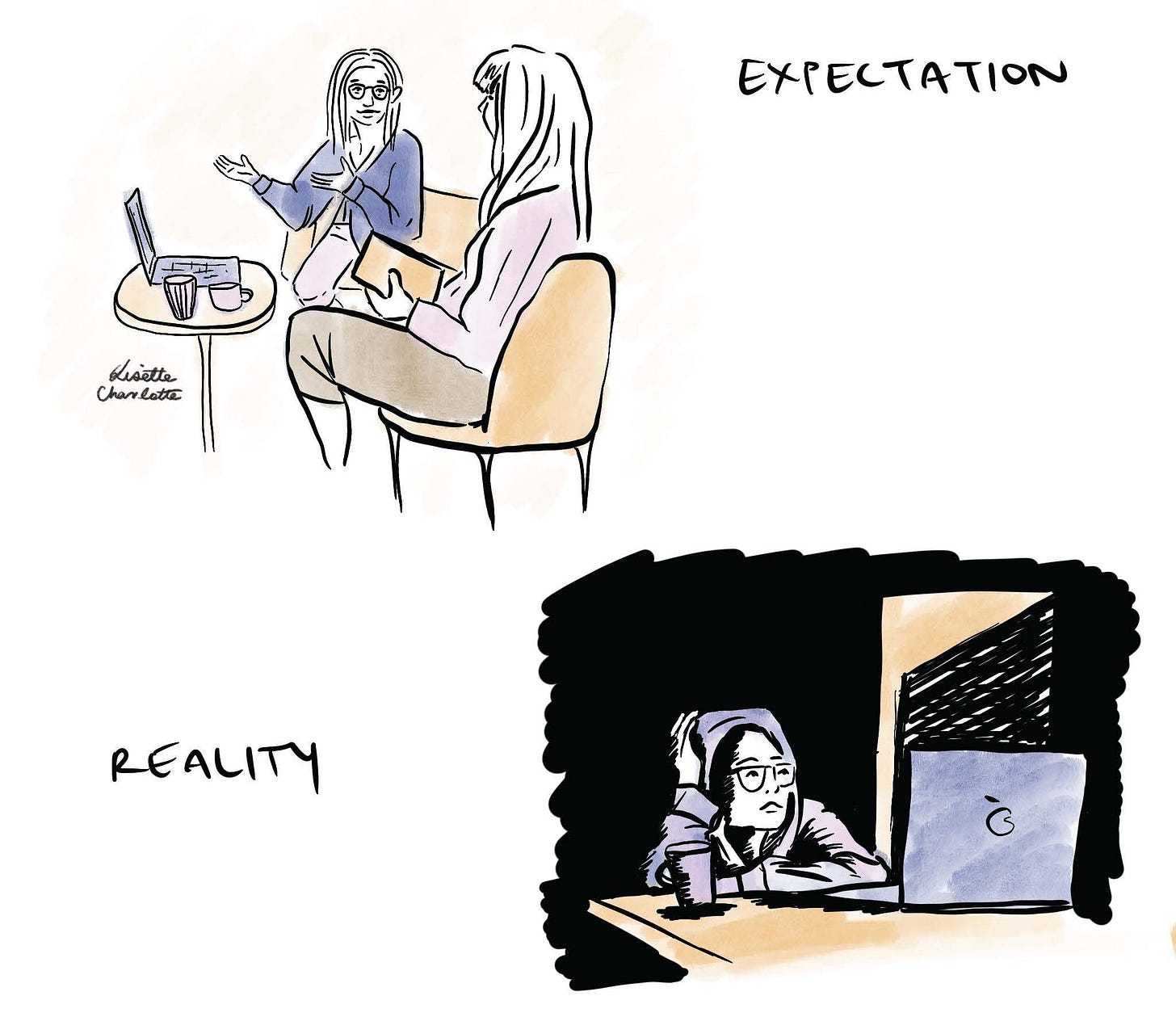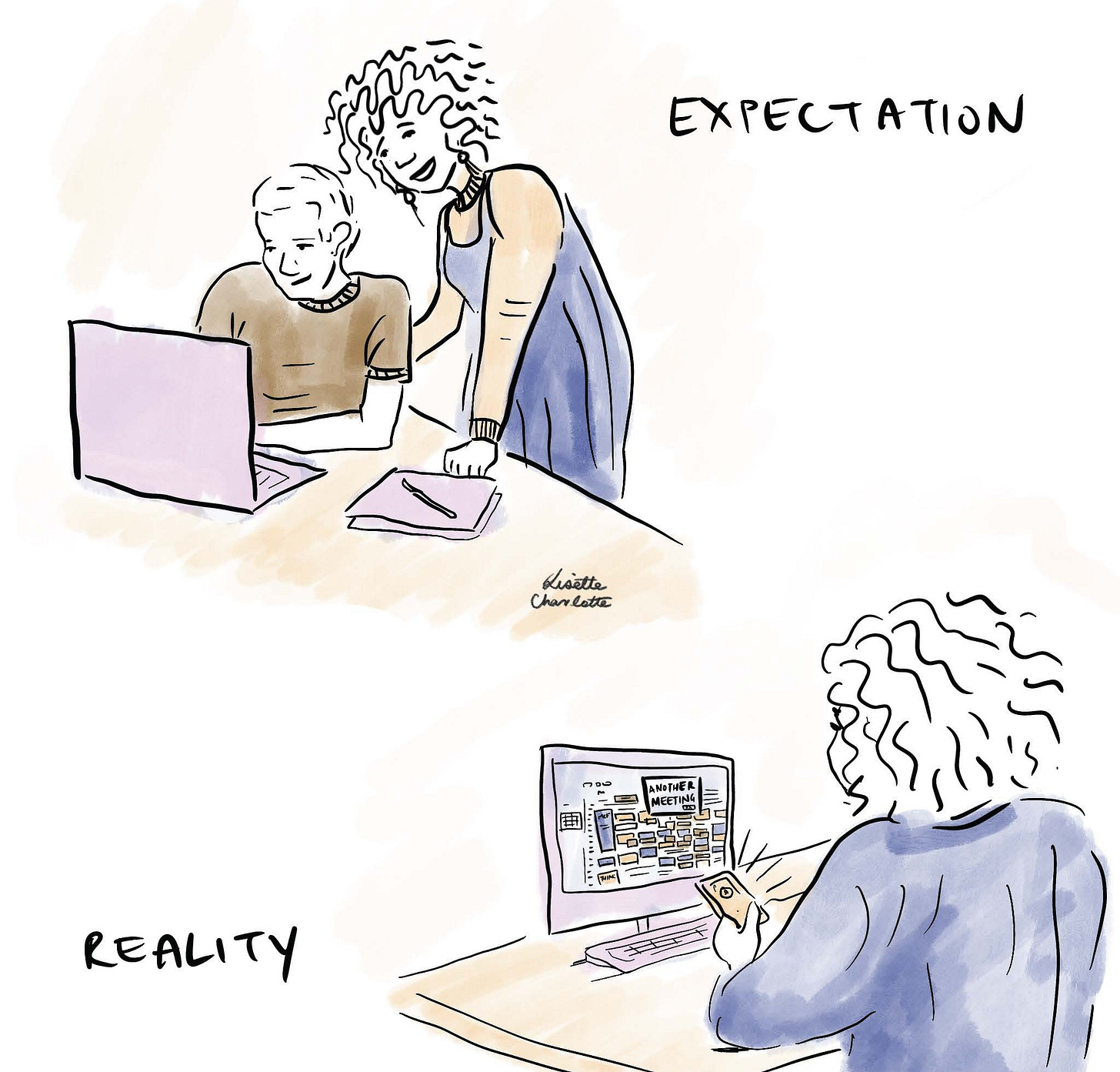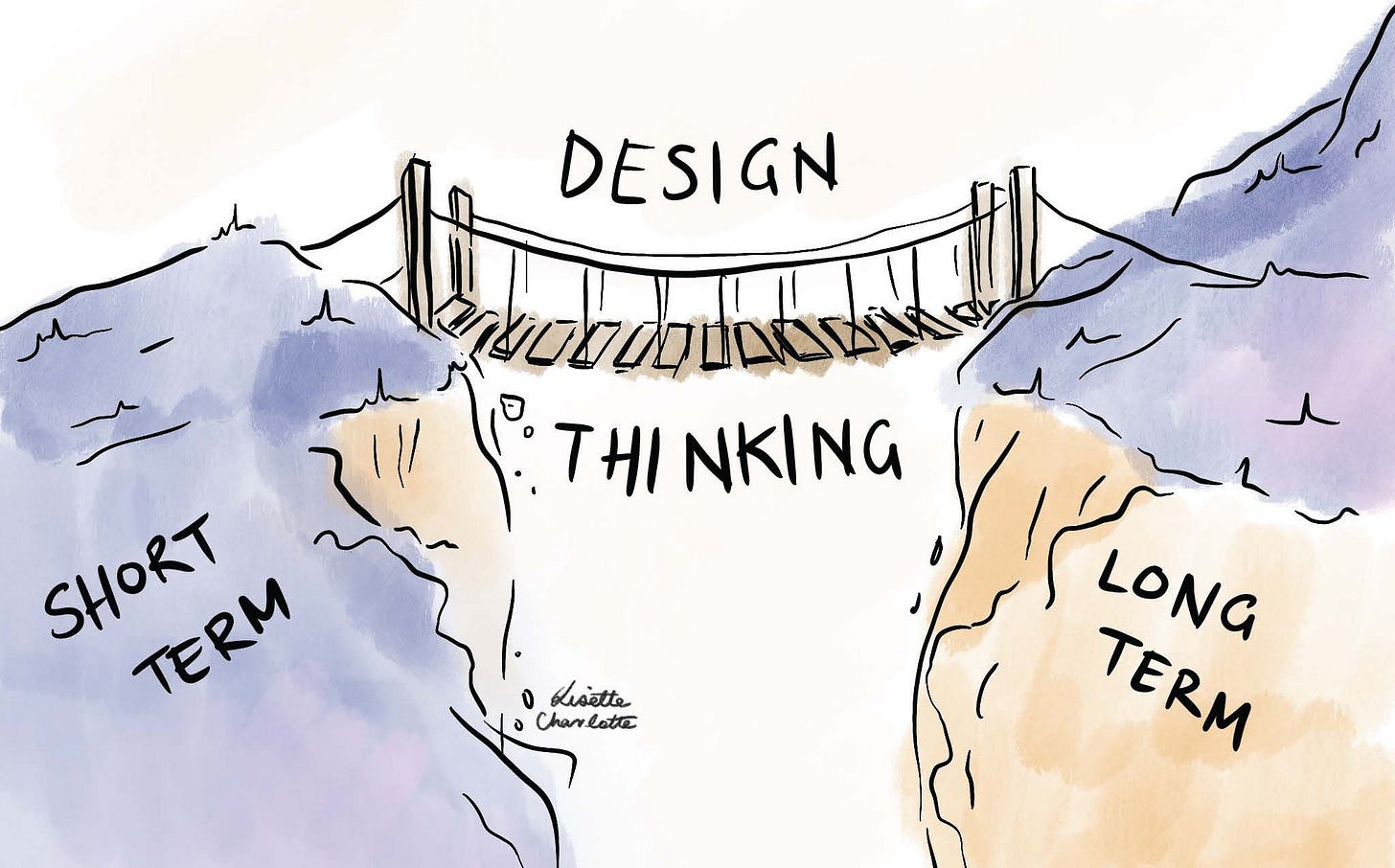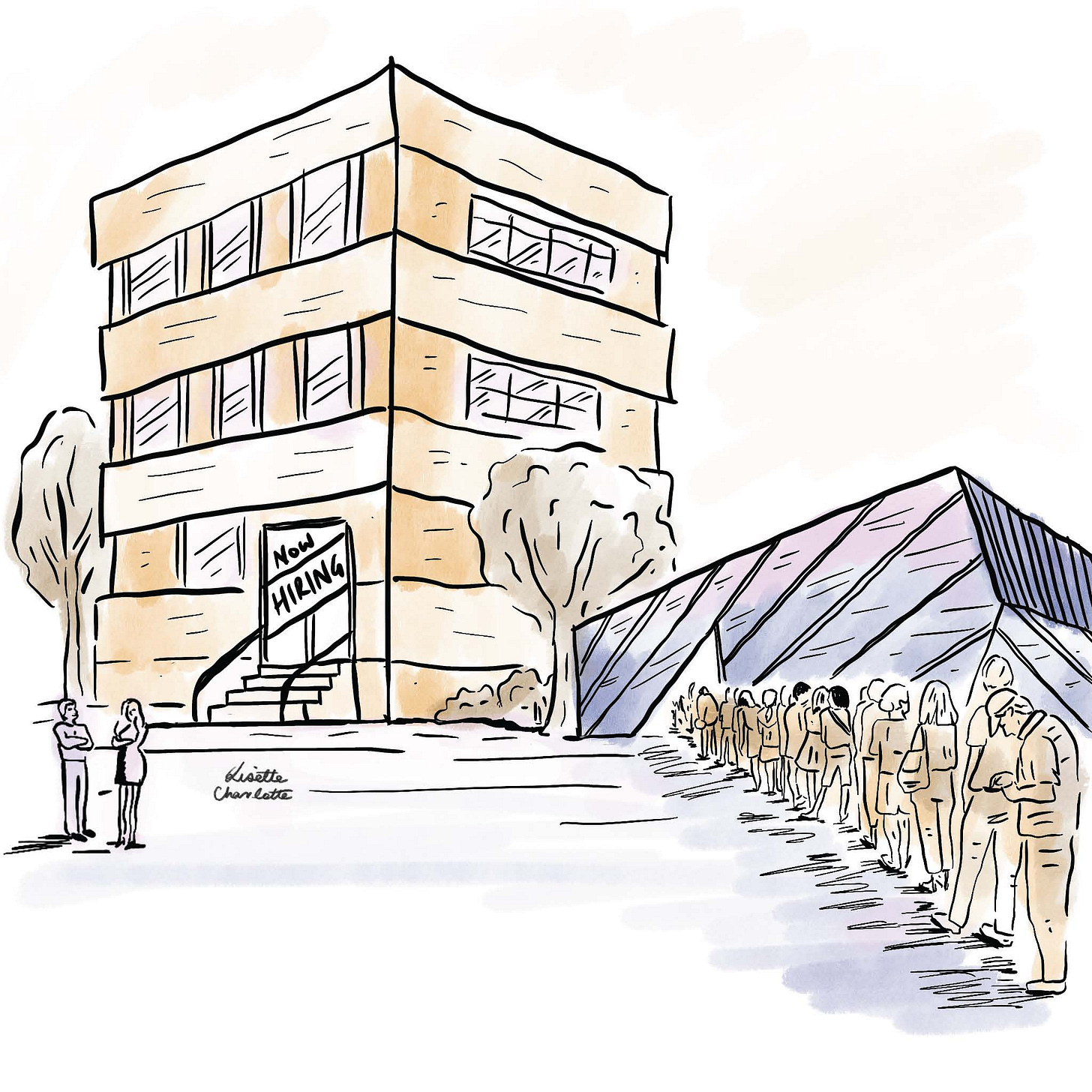One project completed with my pals over at move-merge (see the other one I’ve written about here) was all about depicting the changing nature of employee experience with the massive disruption of Covid and the transition to working from home.
While there are many of working from home, there were certainly many challenges that came along with it, especially for people who also had kids at home at the same time. Some things (focus time to work on projects, making lunch) became easier, other things (events, keeping up with Slack notifications) became a logistical nightmare.
Personally, the transition to work from home opened up opportunities for me just starting out in my freelance career. A lot of businesses that might have been resistant to a fully online employee were suddenly forced to have an entirely online staff. Since then, I’ve noticed more openness to the idea of remote workers and hiring digital nomads.
Expectations versus reality
I was given three different scenarios to depict to support Pip and Tuong’s report on what the transition to work from home meant for employees in different levels of an organisation.
Prisha is a young person just starting out in her career. Her expectation on starting at a new organisation was that she’d have the opportunity to connect with other professionals and have hands-on learning. What she found instead was spending most of the day and night by herself in front of a glowing screen.
An is a senior employee who expected she’d have the opportunity to mentor young employees and manage people. Instead she’s finding that her entire day is back-to-back online meetings and endless notifications.
Rob is mid-career and expected his projects to be collaborative and dynamic. Instead, he’s trying to collaborate online from a chaotic home while his kids are unable to go to school/daycare.
By giving these employees names, faces, and distinct personalities, we can help the audience for the report better picture the challenges that need solving within their own organisation.
Design thinking to the rescue!
For the uninitiated, design thinking is a process for:
Understanding users
Defining the problems they face
Designing solutions with these users
Testing and iterating based on user feedback.
The process is cyclical and might have many different solutions and dead ends as you learn from each test what worked and what didn’t.
The move-merge team were proposing to use a design thinking process as a way for organisations to:
Better understand the challenges facing their employees and employee productivity
Bridge the gap between short-term actions and long-term strategy
Improve organisation desirability to attract top talent.
Their prediction? Innovate or die. Businesses that used design thinking to understand the wants and needs of their employees would thrive, while those that stuck to the status quo would find it impossible to attract and retain staff.
Peppering illustrations throughout a report can help to drive key points home and create an emotional and visual impact that sticks a bit longer in the audience’s mind. For this report, we created the visuals in move-merge brand colours and tried to give them a bit of humour.
The new normal?
Many of organisations have had to contend with the fact that working from home is here to stay and that fully online staff are becoming more common. Good news for me, but there are still a lot of issues that WFH can bring where design thinking could be employed to find solutions.
April download - beach days
The weather here has been rainy and cloudy and thunderstorm-y for the last two weeks. This means we haven’t gone swimming or to the beach in ages, my washing on the line is STILL not dry, and the mosquitoes are out in droves.
I’m dreaming of dry weather, so the April download is a cloudy (but still nice!) day at Plage Ta'ahiamanu, which I wrote about last month.
This A4 high resolution print can be printed professionally or at home. If you want access to this print, consider becoming a paid subscriber!
For paid subscribers, you can download the file below for printing:
Keep reading with a 7-day free trial
Subscribe to Lisette Charlotte to keep reading this post and get 7 days of free access to the full post archives.





